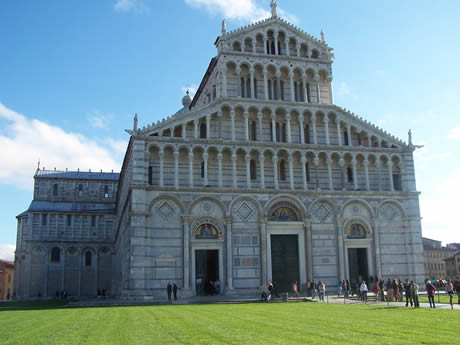Cathedral of Pisa - Duomo

The Pisa Cathedral – or Dome, as it is often referred to – is symbolic for what Pisa offers in terms of religious establishments. However, more or less unjustifiably, this landmark overshadows the other churches and cathedrals which sum up to about twenty establishments, but this state of affairs can, eventually, be understood if one takes into consideration the proximity of the even more famed Leaning Tower of Pisa which, in fact, is the bell tower of the Pisa Cathedral. However, tourists should keep in mind that their stay in Pisa can hardly come down to a short visit to the cathedral, their list of must-see objectives being, on the contrary, rather long.
Thus, the Pisa Cathedral (Cattedrale / Il Duomo di Pisa) has given a lead to the overall construction of religious establishments ever since it was built, namely, during the 11th century, enforcing a certain sense of grandness by its imposing yet unvarnished Romanesque style. Despite the fact that the cathedral has underwent a major fire at the end of the 16th century, plenty of works of art having been destroyed, it has managed to preserve or to acquire in time a series of other highlights by force of which it manages not to fall short of its reputation. Such highlights refer to, for instance, the enormous mosaic representing the Christ Pantocrator, dating back to the 13th century, but completed in early 14th century by Cinambue, to the tomb of Emperor Tino da Camaino (in 1315), and to other religious ornaments – bronze angels, frescoes – and to the Pisano pulpit, all towered by the large dome of the establishment. The world renowned Leaning Tower, the construction of which began in late 12th century, is part of the same religious complex, so while visiting the cathedral one should always tick off the tower.
- Name:
- Pisa Cathedral
- Address:
- Piazza del Duomo, Pisa, Italy
- Telephone number:
- 0039 (0)50 560 547
